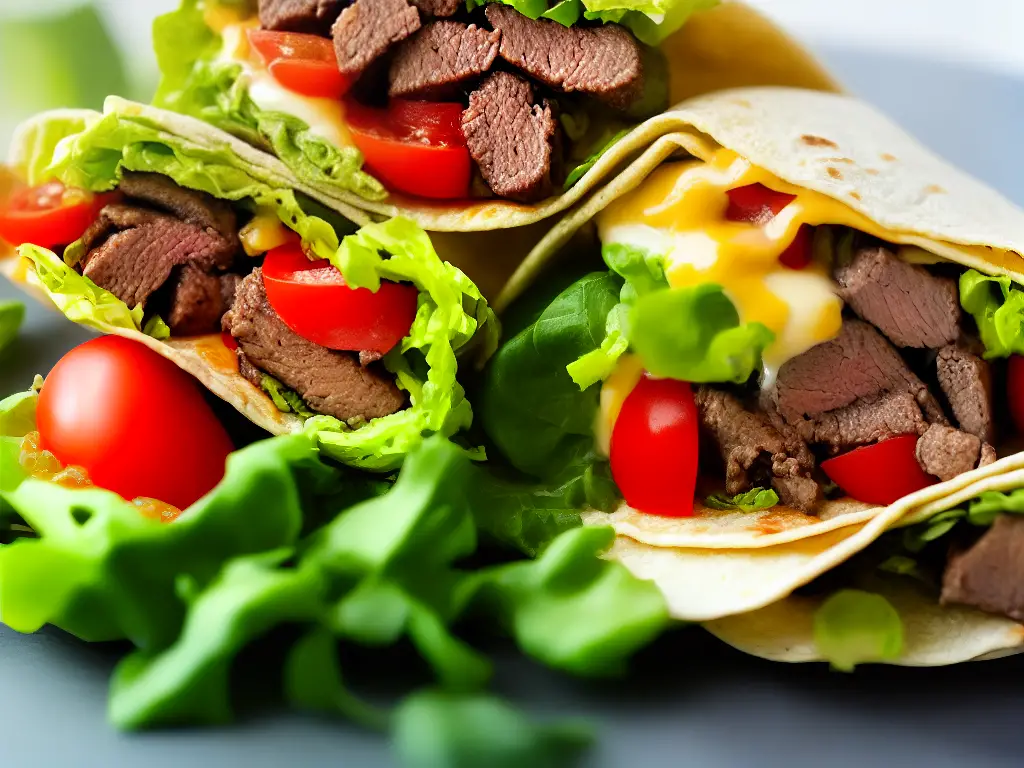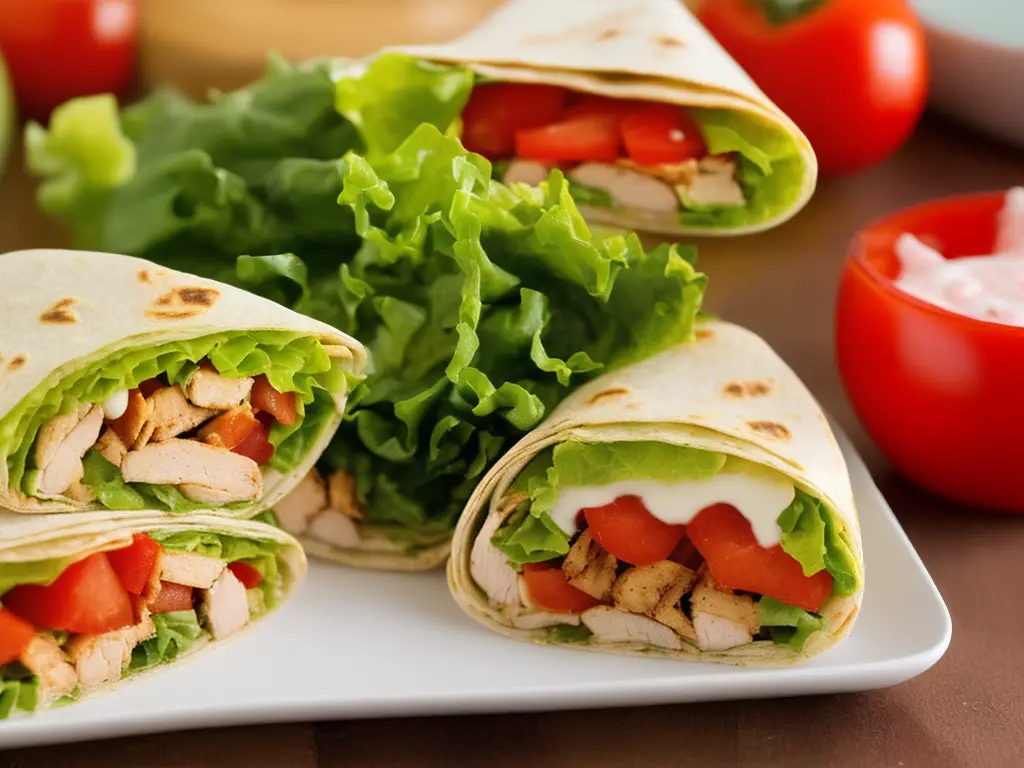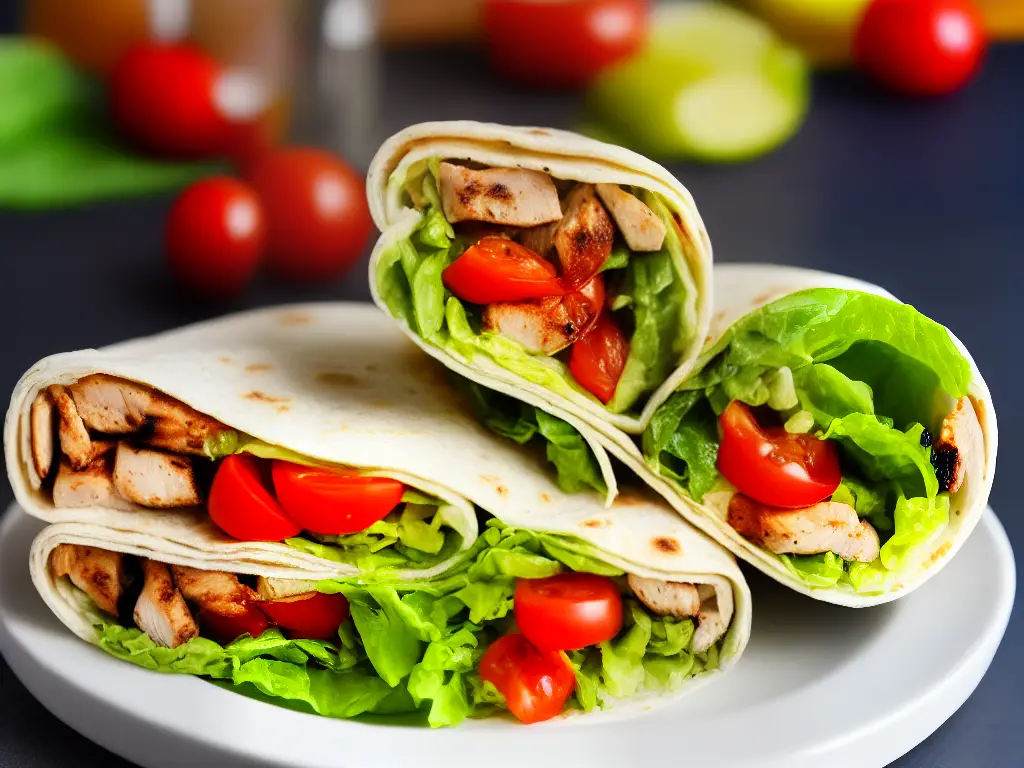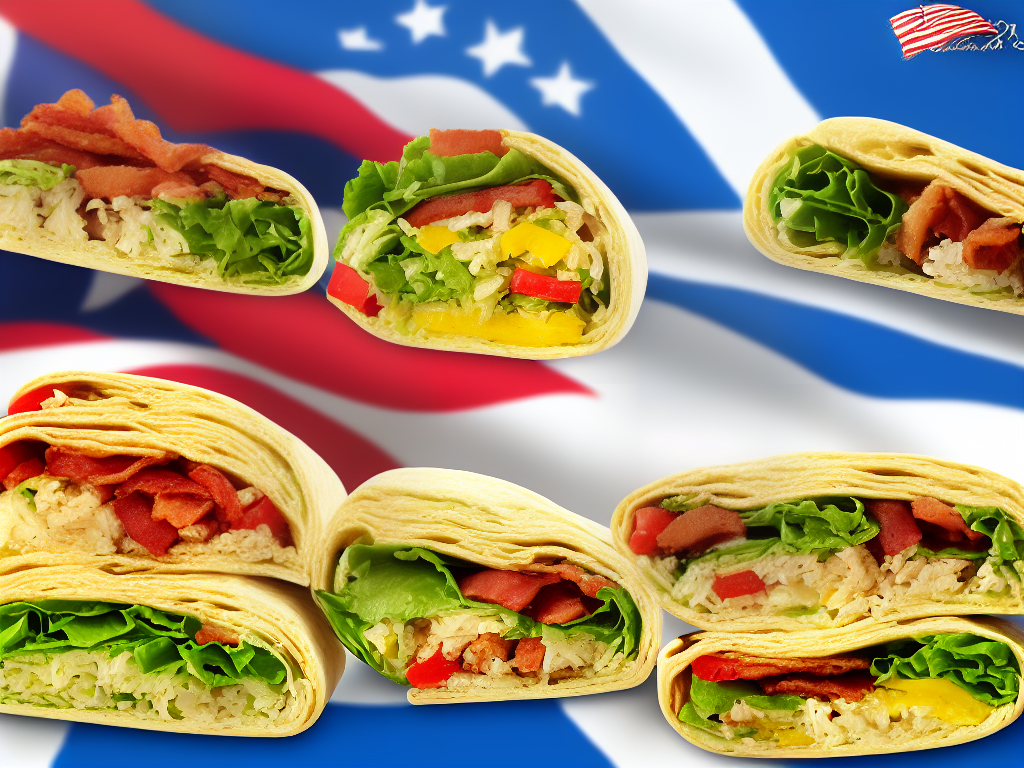The Argentine McWrap, a popular and flavorful offering at McDonald’s restaurants in Argentina, has captured the interest of young adults and food enthusiasts alike. Its unique blend of regional flavors, combined with the convenience of a portable wrap, creates an appealing and delicious meal option. In this exploration, we take a closer look at the history, ingredients, nutritional information, variations, marketing strategies, culinary insights, and environmental considerations surrounding this iconic fast-food item.
History of the Argentine McWrap
The Argentine McWrap is a unique and delicious addition to McDonald’s menu in Argentina, showcasing the signature flavors and ingredients of the country. The origin of the Argentine McWrap can be traced back to McDonald’s continuous efforts to develop and introduce new menu items that cater to the tastes and preferences of its local customers. This innovation not only helps the fast-food giant to maintain its position as a global brand but also allows for the incorporation of regional and cultural elements in its food menu.
The introduction of the Argentine McWrap in Argentina was a carefully thought-out decision that involved thorough market research and product development. In recent years, McDonald’s has focused on creating menu items that contain a balanced mix of proteins, carbohydrates, and essential nutrients. This shift to healthier options is in response to the increasing consumer demand for more wholesome fast food choices. In Argentina, a country known for its rich culinary traditions and love for meat, McDonald’s saw an opportunity to create a new product that would resonate with the local palate while aligning with its commitment to providing healthier and nutritious menu options.
The Argentine McWrap is built to cater to the preference of its local demographic, featuring some of the country’s most beloved flavors and ingredients. The wrap is made from a soft tortilla filled with grilled beef or chicken, which are key components in Argentine cuisine. It is then layered with fresh vegetables such as lettuce and tomatoes, along with chimichurri sauce and cheese, effectively combining taste and nutrition. Chimichurri, a tangy, herb-based green sauce, is a popular accompaniment to grilled meats in Argentina, lending an authentic touch to the McWrap.
Over time, the Argentine McWrap has undergone changes to perfect its recipe and presentation, with customer feedback playing a key role in its ongoing development. McDonald’s has made continuous efforts to source high-quality ingredients and fine-tune the combination of flavors, ensuring that the overall taste continues to reflect Argentine culinary culture. Social media campaigns and limited-time promotions have also helped in increasing the visibility and relevance of the product among the younger generation.
The successful implementation of the Argentine McWrap not only exemplifies McDonald’s ability to innovate and adapt to regional tastes but also highlights the brand’s commitment to prioritizing customer satisfaction. The Argentine McWrap, with its blend of traditional flavors and nutritional benefits, has carved a niche for itself in the Argentine market and serves as a testament to McDonald’s ongoing efforts to cater to diverse palates while promoting healthier food choices worldwide.

Ingredients and Preparation
A crucial component of the Argentine McWrap is its delicious and flavorful protein, chicken. McDonald’s typically offers the chicken in both grilled and crispy varieties, providing customers the option to choose according to their taste preferences. The chicken is seasoned with a mix of spices such as salt, pepper, garlic powder, and paprika, then skillfully cooked on a grill or deep-fried. The use of chicken in this dish ensures a tender, juicy, and satisfying bite, making it the centerpiece of the McWrap while maintaining the global chain’s commitment to offering diverse and healthier food choices.
In addition to the chicken, a variety of fresh vegetables contribute to the variety of flavors and textures in an Argentine McWrap.
Lettuce, often in the form of Romaine or Iceberg, is a staple base to the wrap as it adds a crisp and refreshing element.
Tomato adds a burst of natural sweetness and freshness that nicely complements the savory notes of the chicken.
Additionally, onions, either raw or grilled, further enhance the flavor profile, contributing a zesty and somewhat sweet flavor.
An essential element of an Argentine McWrap is the dressing used to bind together all the ingredients, which not only provides a creamy and tangy flavor but also a moist and enveloping texture for the wrap.
Chimichurri, a traditional Argentine sauce made from fresh herbs, garlic, vinegar, and oil, is one of the most popular choices for this dish.
Its bold flavors of parsley, oregano, and garlic give a zesty punch that pulls the sandwich together.
Alternatively, garlic mayonnaise or a mild cheese sauce can be used as the dressing, but chimichurri remains the more distinctly Argentine choice.
Assembling an Argentine McWrap is a simple yet precise process that ensures the final product is both delicious and visually appealing.
Firstly, a large, soft flour tortilla is warmed on a griddle or over an open flame to make it pliable.
Then, the tortilla is laid out on a flat surface, and the dressing of choice is spread evenly across its center, ensuring that all the ingredients will be touched by its delicious flavor.
The cooked chicken is then placed on top of the dressing, followed by the lettuce, tomato, and onions.
The tortilla is folded over the top and bottom of the fillings, before being rolled up tightly from one side to the other, encasing the ingredients neatly within.
Last, the assembled McWrap is often toasted or grilled to give it a final touch of warmth and crispness before being enjoyed.
The versatility and freshness of the Argentine McWrap make it a popular choice for a quick and satisfying meal. The use of traditionally Argentine ingredients such as chimichurri sauce distinguishes it from other McWrap variations, offering a unique and delectable flavor experience. The combination of tender chicken, crisp vegetables, and bold sauce creates a harmonious medley of tastes and textures that will leave your taste buds desiring more of this delightful Argentine McWrap.

Nutritional Information
Delving deeper into the Argentine McWrap, understanding its nutritional information is important for those interested in intermediate knowledge about this delicious menu item, offered at McDonald’s in Argentina. By analyzing its components, including macro and micronutrients, caloric content, health benefits, and any possible dietary restrictions or concerns for those with allergies or sensitivities, one can appreciate the balance of Argentine cuisine infused into the classic McWrap. This versatile and satisfying meal brings a unique twist, capturing the essence of Argentine flavors and providing an unforgettable taste experience.
One of the key components to evaluating the nutritional content of the Argentine McWrap is understanding its macronutrient composition. Macronutrients include proteins, carbohydrates, and fats, which are the primary sources of energy for our bodies. The Argentine McWrap contains a balanced mix of these macronutrients, with a generous portion of grilled chicken as its primary protein source. Additionally, the wrap includes vegetables like lettuce and tomatoes, providing essential vitamins and minerals. The wrap itself is a source of carbohydrates, while the sauce or dressing used in the Argentine McWrap may contribute to its fat content.
The caloric content of the Argentine McWrap can vary depending on the size and specific ingredients included. However, it is essential to consider that the McWrap can be a relatively healthier option when compared to other fast food menu items, such as burgers or fried chicken. The grilled chicken used in the McWrap is a lean protein source, typically lower in calories than fried alternatives. Moreover, the presence of vegetables in the wrap helps to maintain a balanced diet and provides essential micronutrients that promote overall health.
Analyzing the health benefits of the Argentine McWrap is important for understanding its potential contribution to a nutritious diet. The grilled chicken component can be an excellent source of protein, which is essential for building and maintaining muscles. The vegetables present in the wrap, such as lettuce and tomatoes, provide necessary dietary fiber, vitamins, and minerals, which are all essential components for a balanced diet and optimal health.
Finally, it is crucial to consider any possible dietary restrictions or concerns regarding the Argentine McWrap. Those with allergies or sensitivities should be aware of any potential allergens or ingredients that may cause an adverse reaction. For instance, individuals with gluten intolerance or celiac disease may need to inquire about the specific type of wrap used in the Argentine McWrap, as traditional flour-based wraps contain gluten. Furthermore, individuals with specific dietary restrictions, such as vegetarians or those who follow halal or kosher dietary guidelines, may need to explore if the Argentine McWrap can be customized to accommodate their particular needs.
The Argentine McWrap is a unique offering from McDonald’s that reflects the flavors and culinary preferences of Argentina. Incorporating ingredients commonly found in Argentine cuisine, such as grilled chicken, lettuce, tomato, cheese, and chimichurri sauce, it sets itself apart from other fast-food options. Chimichurri, a green sauce made from finely chopped parsley, minced garlic, vinegar, and oil, adds a distinct flavor to this particular McWrap.

Variations and Regional Adaptations
Given its combination of essential macro and micronutrients, the Argentine McWrap can be a relatively healthier and delicious choice that may contribute to a balanced diet. However, it is crucial to stay mindful of individual dietary restrictions and preferences when making choices related to this unique culinary experience. Although the Argentine McWrap is specific to McDonald’s in Argentina, the franchise offers various other McWrap options worldwide, catering to regional tastes and preferences.
One such adaptation of the McWrap, which draws inspiration from global flavors, is the Japanese McWrap. True to its roots, the Japanese McWrap features a mild wasabi sauce and is served in a nori (seaweed) wrap instead of the usual tortilla wrap. The use of traditional Japanese ingredients such as wasabi and nori in the McWrap highlights the customized approach that McDonald’s takes to cater to its international customer base.
In the United States, McDonald’s has, in the past, offered versions of the McWrap such as the Southwest McWrap and the Bacon & Ranch McWrap. These versions typically have grilled or crispy chicken, lettuce, tomatoes, and cheese, along with a special sauce such as ranch dressing or chipotle dressing to match the specific theme or regional preference. While these McWraps are not direct adaptations of the Argentine McWrap, they follow a similar template of tailoring the McWrap to reflect local flavors and ingredients.
Comparable products offered by other fast-food chains can be found in the form of customizable wraps and burritos. For example, Subway offers a variety of sandwiches that can be turned into wraps by swapping out the bread for a tortilla. Chipotle, on the other hand, serves customizable burritos, with the choice of meat, rice, beans, and other toppings customers can personalize to their taste. While neither of these chains specifically targets a particular regional cuisine like the Argentine McWrap, they do allow customers to create their unique combinations, contributing to the variety of fast-food wraps and burritos on the market.
In some countries, McDonald’s has experimented with limited-time variants and promotions to keep their McWrap menus fresh and exciting. One such example is the introduction of the ‘Great Tastes of the World’ promotion in the United Kingdom, which featured limited-edition McWrap variations inspired by different international flavors. This strategy demonstrates that McDonald’s continues to experiment and adapt its McWrap offerings to cater to a variety of global tastes and influences, providing unique products for customers around the world to enjoy.

Marketing and Consumer Perceptions
Capitalizing on this global reach and local adaptation, McDonald’s introduced the Argentine McWrap as a tailor-made option for Argentine consumers. Combining traditional flavors of Argentine cuisine with the familiarity and convenience of McDonald’s, the Argentine McWrap features ingredients like beef, chimichurri sauce, lettuce, tomatoes, and cheese, which cater to the preferences of local consumers. This focus on regional tastes and ingredients exemplifies McDonald’s marketing strategy, as they continue to create unique, location-specific menu items that effectively engage customers around the world.
Another marketing strategy deployed by McDonald’s to highlight the Argentine McWrap is their use of social media advertising. McDonald’s has an active digital footprint that engages both local and global audiences, providing up-to-date information on promotions, menu items, and exclusive deals. By sharing enticing photos of the Argentine McWrap on platforms such as Facebook, Instagram, and Twitter, McDonald’s aims to generate interest and curiosity among potential customers, who may be intrigued by the mix of classic Argentine ingredients and the brand’s global appeal.
In-store branding and promotions also play a pivotal role in McDonald’s marketing approach for the Argentine McWrap. By utilizing a combination of promotional materials and in-store displays, Mcdonald’s emphasizes the product’s unique characteristics, such as the use of chimichurri sauce and Argentine beef. These elements not only create a visually appealing presentation but also helps customers understand the distinctiveness of the offering and the unique fusion of Mcdonald’s and Argentina’s gastronomic culture.
Consumer perceptions and preferences for the Argentine McWrap are shaped by various factors, such as their affinity for traditional Argentine flavors, the convenience and affordability offered by McDonald’s, and the overall perception of the brand. Argentine consumers are generally fond of local flavors and ingredients, which play a significant role in their choice of menu items. The Argentine McWrap satisfies this preference by incorporating familiar tastes into a convenient fast-food format. The brand’s global reputation for quality and consistency further enhances the consumer’s decision to try the product, as McDonald’s is trusted to maintain its standards across different geographies.
Furthermore, marketing campaigns that involve collaborations with popular local figures and influencers can greatly influence consumer perceptions of food items like the Argentine McWrap. By associating the Argentine McWrap with local celebrities and influencers, McDonald’s establishes a sense of authenticity and pride within the community. This marketing strategy is likely to resonate with consumers who are more inclined to try and recommend the Argentine McWrap as a result of the endorsement. Overall, McDonald’s has utilized a variety of marketing strategies and approaches to promote the Argentine McWrap, which has helped form the perceptions and preferences of consumers, ultimately making it a popular item on their menu and contributing to its success.

Culinary Insights and Techniques
Part of the Argentine McWrap’s popularity comes from its delicious flavor that showcases Argentine cuisine. One of the key components of this dish is the marinated and grilled chicken, which adds a succulent and savory taste. To marinate the chicken, a mix of herbs, spices, and other seasonings such as garlic, onion, parsley, and a touch of chili powder, is used. This blend not only helps tenderize the meat but also permeates it with a rich, deep flavor that is truly mouthwatering. The chicken is then grilled to perfection, producing a slightly smoky, charred taste that pairs well with the other ingredients in the wrap. Combining these flavors and the marketing strategies, McDonald’s ensures that the Argentine McWrap is an appealing food choice for young adults and other consumers.
In addition to the chicken, the Argentine McWrap features numerous other elements that contribute to its distinctive taste. One such ingredient is chimichurri, a tangy and herbaceous Argentine sauce made from finely chopped parsley, garlic, olive oil, vinegar, and various spices. The chimichurri adds a burst of freshness to the dish and serves as a delightful contrast to the rich, bold flavors of the marinated chicken. Other key ingredients in the wrap include fresh lettuce and tomatoes, which bring crispness and juiciness that balance the richness of the other components.
Assembling the Argentine McWrap is an opportunity to showcase your own culinary creativity and skill. A soft, warm tortilla is used as the base for the wrap, providing a satisfying and pliable vessel for the flavorful filling. To begin, spread a generous layer of chimichurri sauce onto the tortilla, followed by the grilled chicken, lettuce, and tomatoes. Feel free to add other toppings such as thinly sliced red onion, bell peppers, or avocado to further enhance the taste and texture of the dish. Finally, fold the tortilla tightly around the ingredients to create the perfect handheld meal.
To truly elevate your Argentine McWrap experience, consider experimenting with different variations and personal touches. For instance, you could swap the traditional chimichurri for a spicier version by adding additional chili flakes or using a red chimichurri instead. Another idea is to incorporate a variety of Argentinian cheeses, such as provolone or queso fresco, to add a creamy, tangy element to the wrap. The possibilities are endless, and each unique combination you create can result in a fresh, exciting taste sensation.
Presentation is a crucial aspect of the culinary process, and the Argentine McWrap is no exception. Showcasing the vibrant colors of the ingredients and the enticing, charred grill marks on the chicken is essential when placing the wrap onto a plate. Drizzling extra chimichurri sauce over the wrap or serving it on the side can add visual appeal and enhance the flavor. Garnishing the plate with fresh parsley sprigs and lemon wedges further emphasizes the dish’s Argentinian origins and provides a zesty finishing touch. With attention to detail and a willingness to experiment, the Argentine McWrap can become a true masterpiece of culinary artistry.

Environmental and Ethical Considerations
Moving beyond presentation, it’s also important to consider the environmental and ethical impact of producing and consuming Argentine McWraps by examining the sustainability of the sourced ingredients. The wrap typically includes a variety of ingredients, such as meat, lettuce, tomatoes, cheese, various sauces, and a tortilla. The sourcing of these ingredients can have diverse consequences on the environment, depending on factors like how and where they are grown, and the production methods employed. By being mindful of these aspects, one can enjoy the Argentine McWrap as a delicious and environmentally responsible choice.
An essential component of Argentine McWraps is the meat, which often forms the core of ethical debate surrounding fast-food products. In recent years, McDonald’s, who introduced the McWrap, has made an effort to improve their sourcing methods by committing to more sustainable beef production. This includes working closely with their suppliers to ensure that livestock is raised humanely while following best practices to minimize the environmental impact. However, there remain concerns about intensive animal agriculture’s contribution to carbon emissions, deforestation, and resource allocation on a larger scale, which apply to any kind of mass-produced meat product, such as the Argentine McWrap.
Aside from meat, the other ingredients used in Argentine McWraps can also contribute to environmental concerns. For example, producing tomatoes and lettuce typically involves significant water use, artificial fertilizers, and pesticides. While McDonald’s has made efforts to increase its sustainability measures, such as using only sustainably grown coffee beans, there is still room for improvement concerning the environmental impact of other ingredients in their products.
Besides the sourcing of ingredients, the waste created by fast-food packaging presents another environmental challenge related to Argentine McWraps. Although McDonald’s has pledged to make its packaging 100% renewable, reusable, or recyclable by 2025, there are still concerns about the sheer quantity of waste generated by the fast-food industry. Packaging waste often ends up polluting the natural environment, particularly in the form of plastic, which can have severe negative impacts on the world’s oceans and marine life.
Ultimately, while McDonald’s has taken steps to improve the environmental and ethical considerations surrounding products like the Argentine McWrap, there is a long way to go in addressing the broader impacts of the fast-food industry on the environment. By examining the sustainability of individual ingredients, addressing ethical concerns surrounding meat sourcing, and managing waste, consumers can make informed choices about whether or not to incorporate products like the Argentine McWrap into their diets. Continued pressure on fast-food companies to prioritize sustainability will be essential to effecting long-term positive change in these areas.

Through this deep dive into the Argentine McWrap, we have gained an appreciation for its origins, preparation techniques, and the intricate balancing of flavors that cater to the taste preferences of consumers, both in Argentina and around the world. Armed with this knowledge, young adults can make informed choices about the foods they consume and perhaps even feel inspired to experiment with new culinary creations of their own, centered around the Argentine McWrap or other globally-inspired fare. As a reflection of Argentina’s rich culinary culture, the McWrap serves as both a delicious meal option and a symbol of the interconnectedness of our global food landscape.
